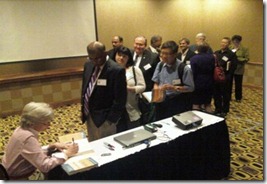I love Bernie Siegel’s advice to wear life loosely.[1] It’s a way of being that speaks to my soul and releases what feels like my creative best.
I’m happiest when I can wrap the magnificence of life loosely around my shoulders like a comfortable, old shawl – and tackle head-on whatever comes my way. I’m a bear to myself and others when I can’t.
I can’t fully define what it means to wear life loosely, but I sure know how it feels. Calm. Exhilarating. Productive. Joyful.
Wearing life loosely involves at least three things for me:
1. Mindfulness: being in the moment and enjoying it totally, without feeling time or performance pressures
2. Playfulness: a lighthearted approach to whatever I’m doing that includes a sense of appreciation and wonder, a willingness to impishly push boundaries and rules of restraint, and plenty of giggles
3. Feeling responsible for only myself: a release from excessive worries and fears for others and the world – real and imaginary.
Although it may seem paradoxical, I work very hard at staying loose. Living life loosely does not come easily, but everything seems to work better when I can.
I grew up in a hard-working, blue collar family. My father held two – sometimes three – jobs much of his life to make ends meet, and I had my own high-top stool in his basement workshop from as early as I can remember to help him however I could. My mother was disabled and rarely left our home – and I assumed adult caretaking roles at an early age.
I came by responsibility, intensity, anathema to wastefulness, and a predisposition for over-achievement honestly: I know how to take care of people and business and myself and get things done. I’m not complaining – that’s something of which I am proud. But I carry a legacy that must be managed: the inner child only runs free when everything is in order.
Wearing life loosely reminds me that perfect order is never arriving: a life mantra of que sera sera is more realistic.
How do you wear your life? Is its mantle loose enough for you to achieve your goals with ease?
Get looser and laugh about it: Laughter and humor are keys to the good life. We all need to laugh more. It’s just that simple! Laughter and humor augment our creativity and productivity, and there’s ample evidence they are good medicine, too.
Humor, for example, gives our creativity a perfect workout. It employs many of the creative right brain’s most powerful attributes: understanding situations in context, getting the big picture, combining different elements in new alignments, and adding surprise and novelty.
Researchers have used humor as a measure of managerial effectiveness, emotional intelligence, and innovation – and those who use it well score high on all three.[2] Humor can reduce workplace hostility, relieve tension, communicate difficult messages, and lessen status differences.[3]
Humor cushions the most stressful bumps in life. Mark Twain once said, “Humor is the good natured side of a truth.” He demonstrated this in his famous response to news accounts of his passing away: “The news of my death has been greatly exaggerated.”
Humor encourages us to take ourselves less seriously – and that is especially important in situations involving difficult people or problems.
Above all, humor is a way to illuminate and break frame – to demonstrate that any one take on a situation is limited, arbitrary, and open for deeper investigation.[4] After Churchill lost the 1945 election to be Prime Minister, his wife Clementine suggested it might be a blessing in disguise. Churchill replied, “That may be, but I wish it were not so well disguised.”
So laugh a little – or a lot. Laughter releases nature’s pain-reducing, relaxation-promoting chemicals called endorphins. You know what tickles your fancy: humor books, corny jokes, movies, improvisation games, comedy tapes, time with witty friends. Engage and enjoy!
Laugh with friends and colleagues. You’ll connect in deeper ways and both benefit from the body’s release of the bonding hormone called oxytocin.[5]
How do you wear your life? Is its mantle loose enough for you? What adjustments do you need to make for a good life? To meet those deadlines with productivity and grace?
[1] Bernie S. Siegel (1998). Prescription for Living. New York: HarperCollins.
[2] Daniel H. Pink (2006). A Whole New Mind: Why Right-Brainers Will Rule the Future. New York: Riverhead Books.
[3] Fabio Sala (2003). “Laughing All the Way to the Bank.” Harvard Business Review (September, 2003).
[4] Lee G. Bolman and Terrence E. Deal (2017). Reframing Organizations: Artistry, Choice and Leadership (sixth edition). San Francisco: Jossey-Bass/Wiley.
[5] Amit Sood (2013). The Mayo Clinic Guide to Stress-free Living. Boston, MA: DaCapo Press, p. 243.
